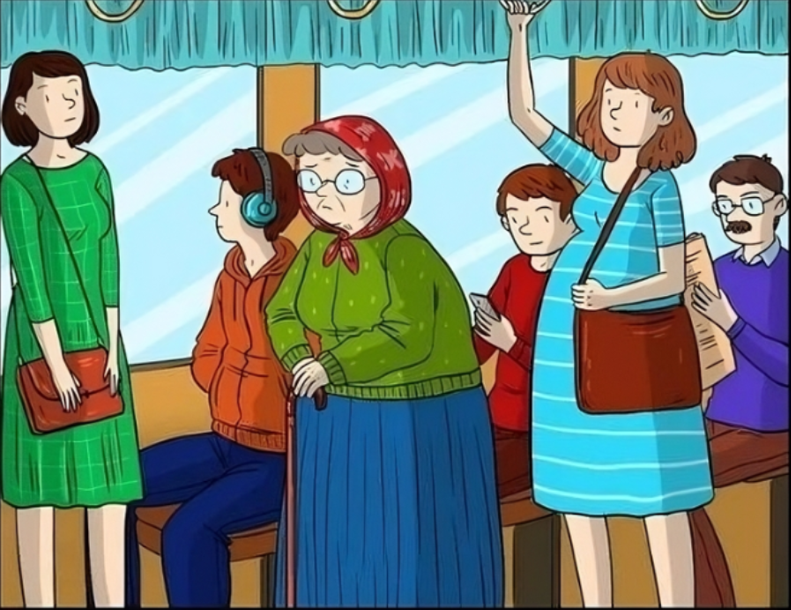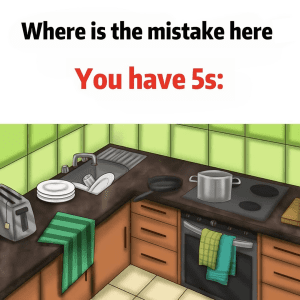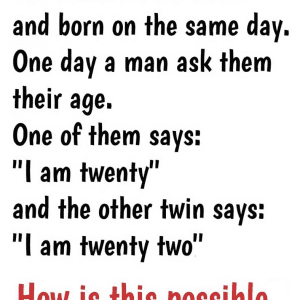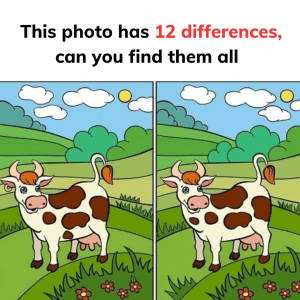Are you ready to put your observational skills to the test? At first glance, this image seems like an ordinary scene in public transportation, but there’s something missing—something you might not notice right away. The challenge is simple: look carefully at the image and figure out what’s missing. So, can you solve this riddle?
Common Mistakes People Make While Solving This Riddle

When it comes to riddles like this one, many people focus solely on the visible details. They might try to spot missing objects, mismatched items, or strange anomalies in the picture. That’s a common mistake when approaching this kind of riddle. While analyzing small details is usually the right way to solve many visual puzzles, this one requires a broader perspective.
This particular riddle plays on a different level of thinking—it’s not about an object or person that’s missing, but rather a missing action or gesture. People often overlook this kind of detail because they are accustomed to searching for something tangible, like an item that is not where it should be. As a result, they miss the true solution, which is less about what’s seen and more about what should have been done.
Step-by-Step Guide to Solving This Riddle
If you’re still puzzled, let’s break it down step by step:
- Look at the setting: The image shows a crowded public transport scene with multiple passengers seated and standing. Notice the characters in the picture—there’s a mix of young and old people, including an elderly woman with a cane and a pregnant woman, both standing.
- Pay attention to the seated characters: Now, observe the passengers who are sitting. They appear to be young, capable individuals, either distracted by headphones, phones, or looking out the window. None of them are making an effort to offer their seats to those who clearly need it more—the elderly woman or the pregnant woman.
- Recognize the social context: In most societies, it is considered a basic courtesy to offer a seat to someone elderly, pregnant, or physically burdened when on public transportation. This kind of chivalry is a fundamental social norm, yet in this picture, it’s absent.
- Understand what’s missing: So, what’s missing from this picture isn’t a physical object but an act of kindness. The missing element is “chivalry”—the simple gesture of offering a seat to someone in need.
- Confirm the interpretation: As you revisit the picture with this perspective, it becomes clear that the lack of chivalry is what makes the scene unsettling. The image is meant to highlight the absence of a caring action that should be a natural response in such a situation.
So, “Chivalry” is what is missing from this riddle; something you can verify just by looking at the old woman and the pregnant woman.
Why This Riddle Is Important for Social Awareness
While this riddle may seem like just another fun challenge at first, it actually carries a meaningful message about social behavior. By presenting an image where chivalry is visibly missing, it subtly reminds us of the importance of basic social etiquette, like offering seats to those who need them more. It’s a clever way to not only entertain but also encourage reflection on how we treat others in everyday life.
This riddle serves as a reminder that small acts of kindness matter. In a fast-paced world where people are often too absorbed in their own lives, it’s easy to forget to pay attention to others around us. This puzzle invites us to pause and consider how a simple gesture can make a difference.
Share Your Thoughts: Did You Spot What’s Missing?
Now that you know what’s missing from the picture, did you manage to figure it out before reading the explanation? How long did it take you? We’d love to hear your thoughts in the comments below! Let us know if you’ve ever been in a similar situation where someone failed to offer a seat, or if you’ve experienced a moment where a small act of kindness made your day.
Conclusion: Riddles Can Improve Your Observational Skills
This riddle might have been tricky, but it carries a powerful message. Beyond simply testing your ability to spot differences or missing items, it challenges you to think about behaviors and social norms. By engaging with such puzzles, you can sharpen not only your observational skills but also your awareness of the world around you.
So, next time you’re on public transport, remember this riddle—and if you see someone who needs a seat more than you do, offer yours. After all, being attentive to others is just as important as being observant in a riddle!


